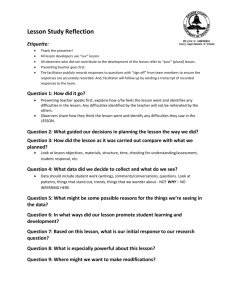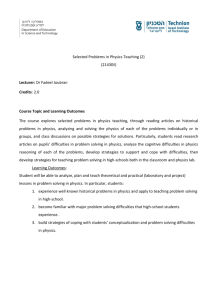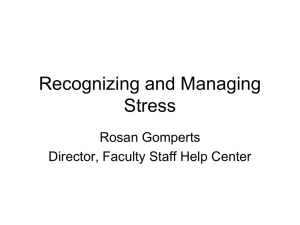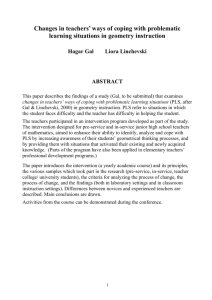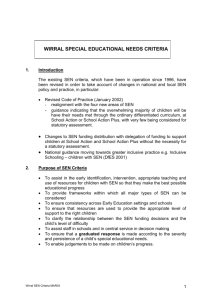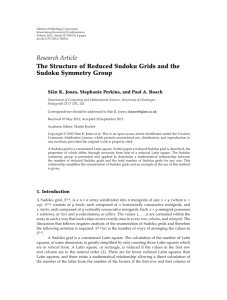Memory and Learning Difficulties
advertisement
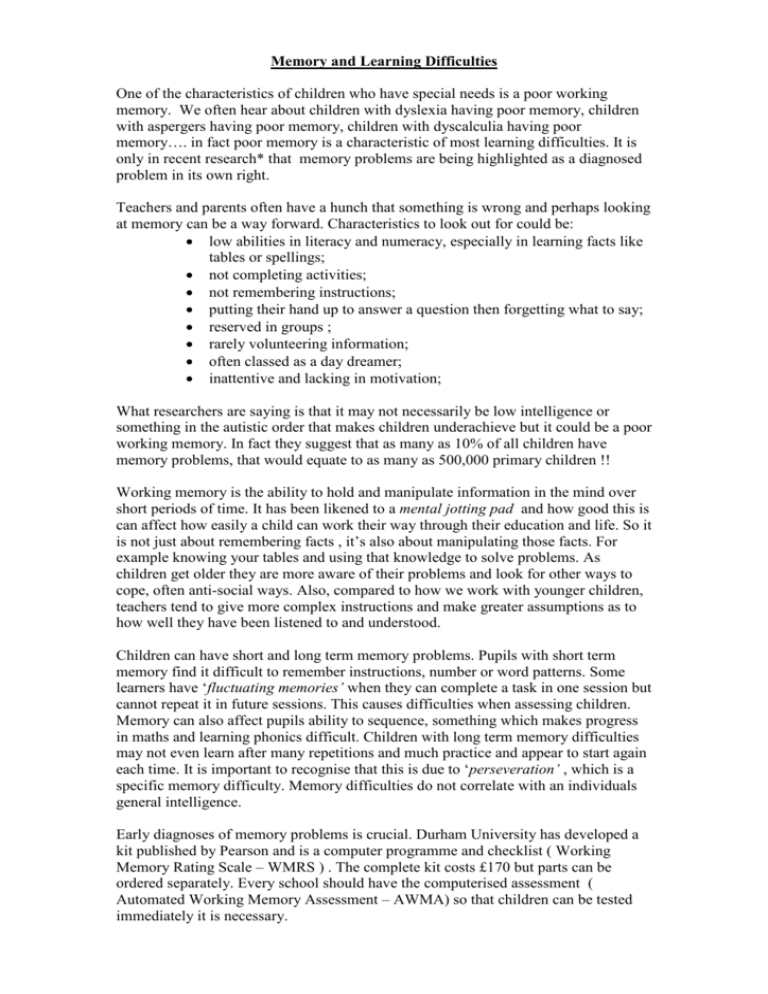
Memory and Learning Difficulties One of the characteristics of children who have special needs is a poor working memory. We often hear about children with dyslexia having poor memory, children with aspergers having poor memory, children with dyscalculia having poor memory…. in fact poor memory is a characteristic of most learning difficulties. It is only in recent research* that memory problems are being highlighted as a diagnosed problem in its own right. Teachers and parents often have a hunch that something is wrong and perhaps looking at memory can be a way forward. Characteristics to look out for could be: • low abilities in literacy and numeracy, especially in learning facts like tables or spellings; • not completing activities; • not remembering instructions; • putting their hand up to answer a question then forgetting what to say; • reserved in groups ; • rarely volunteering information; • often classed as a day dreamer; • inattentive and lacking in motivation; What researchers are saying is that it may not necessarily be low intelligence or something in the autistic order that makes children underachieve but it could be a poor working memory. In fact they suggest that as many as 10% of all children have memory problems, that would equate to as many as 500,000 primary children !! Working memory is the ability to hold and manipulate information in the mind over short periods of time. It has been likened to a mental jotting pad and how good this is can affect how easily a child can work their way through their education and life. So it is not just about remembering facts , it’s also about manipulating those facts. For example knowing your tables and using that knowledge to solve problems. As children get older they are more aware of their problems and look for other ways to cope, often anti-social ways. Also, compared to how we work with younger children, teachers tend to give more complex instructions and make greater assumptions as to how well they have been listened to and understood. Children can have short and long term memory problems. Pupils with short term memory find it difficult to remember instructions, number or word patterns. Some learners have ‘fluctuating memories’ when they can complete a task in one session but cannot repeat it in future sessions. This causes difficulties when assessing children. Memory can also affect pupils ability to sequence, something which makes progress in maths and learning phonics difficult. Children with long term memory difficulties may not even learn after many repetitions and much practice and appear to start again each time. It is important to recognise that this is due to ‘perseveration’ , which is a specific memory difficulty. Memory difficulties do not correlate with an individuals general intelligence. Early diagnoses of memory problems is crucial. Durham University has developed a kit published by Pearson and is a computer programme and checklist ( Working Memory Rating Scale – WMRS ) . The complete kit costs £170 but parts can be ordered separately. Every school should have the computerised assessment ( Automated Working Memory Assessment – AWMA) so that children can be tested immediately it is necessary. Sometimes it is just blindingly obvious that a child has memory problems. So we search for ways to help the child cope, such as : • making sure that all staff are aware that this could be a problem; • giving instructions that are simple and repeated often; • personal management of time can be helped with time boards , diaries and a PDA or personal organiser ; • breaking down tasks into small junks, perhaps writing instructions in different coloured inks in order to provide a visual clue; • the learning of specific data , such as number bonds or spellings, to be taught in small chunks repeated two or three times daily , this repetition is crucial for on-going activities; • the provision of visual aids such as simple timetables, number lines, lists and flashcards of data to learn which can be left around the room; • it is important to constantly remind children about the task they are doing and the relevant instructions; • work with the pupils on finding memory strategies or triggers that are effective for them; • target classroom support assistants to those children identified with memory problems; • have an ethos in the class that it is OK to ask for help, even more than once ! The strategies above are very important because they help reduce the risk of failure by the child. As well as helping children to cope with the problem of poor working memory by effective management, can we actually improve working memory? Research at the moment seems to point towards the fact that training towards a better working memory doesn’t necessarily lead to improved academic success. But the introduction of brain training electronic aids and games in newspapers such as Sudoku seems to have had an impact on improving peoples brain power and more important their ability to solve problems quickly and it gives them confidence in their abilities. I have created a number of activities to help develop working memory skills. First I have a number of pictures that can be cut out and direct recall memory games played ( see the guidance sheet ) . Then I have created a number of graded memory lines and grids. These are a series of patterns using shapes, colour, numbers, letters and pictures for the children to study and then answer questions to stretch their memory skills in sequencing, direct recall and processing information.. All the memory line and grid worksheets have accompanying notes and example questions for each of the sections. The grids also have blank answer sheets to record responses. Like all kinds of brain exercising, whether it is sudoku, cross word puzzles or memory games, a little ( 10 – 15 minutes ) every day is the best way for these kind of exercise to have the greatest effect. Gordon Aspland * References to research refer to the work of Dr.Tracy Alloway of the University of Durham.

